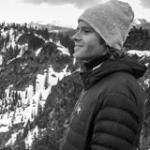Search the Community
Showing results for tags 'VND'.
-
I broke my L.C.W Fader Variable ND II a while back, and finally got around to replacing it. I decided to give the Bower variable ND a try, at $40. Bower makes decent lenses, so I thought I might luck out. And luck out, I did. It's definitely better than the L.C.W, with less bokeh striation / "texture", no noticeable color shift up to the strongest setting, and the characteristic 'X' pattern only shows up at the very strongest settings (7/8+), as opposed to on the L.C.W where it dominates the image at every strength above 2/3 or so. I haven't tried many higher end variable ND filters, but I'd like to see how this one stacks up against them. So far I'm very impressed. The only issue I have noticed is that the first 1/5 of the adjustment throw seems to go from a strong polarizing effect to a more transparent effect, without any ND loss or gain. After that the polarizing effect stays minimal, and the neutral density increases as expected. On the plus side, this quirk might mean that the filter could double as both a variable ND filter, and as a linear polarizer. The bokeh texture / "striation" is my biggest complaint, but it's still not as coarse as the L.C.W Fader mk. II that I used to own. The 'X' pattern also doesn't show up until a strength that I find myself unlikely ever to want to use anyway (e.g. T1.3, 1/50s, bright sunlight, ISO 1600). Color shift is negligible. Sometimes green things seem to get an ever so slightly brownish cast, but it's so, so subtle. Softening is also quite mild. In my testing it's not an issue, and if anything seems to be a subjective change rather than an objective softening. I have not used it on a lens longer than 85mm, though, so maybe it's worse on teles. My verdict is that, for $40, this is should be an obvious choice for a budget VND. If I had more money of course I'd buy a Schneider, Singh-Ray, or Heliopan, but this performs like what I'd expect from a VND in the $150-$250 range. I've attached one sample. For more, look here: https://www.dropbox.com/sh/gbf684pt21g64zg/AAA-Mk1MYCRdxuQwN98UkC22a?dl=0
- 3 replies
-
- neutral density
- variable neutral density
-
(and 4 more)
Tagged with:
-
Hiya Guys! I'm new to this forum and will try to be as clear as possible. :) I'm about to buy new gear for videography pretty soon and have already chosen to go for the GH4, that i will use with these lenses : Voigtlander Nokton MF 35mm f/1.4 (77mm with crop factor), Nikkor 35mm DX (56mm with speedbooster), Nikkor 50mm FX (80mm with sb) and a Nikkor 18-55mm DX (28,8-88mm with sb). I applied a 2,2 crop factor for Voigtlander lenses and 1,6 for the Nikon ones (DX and FX). Is this correct? I keep seeing different crop factors all over the internet. The main use will be documentary and travel videography, so I'm trying to get good and sharp gear easy to travel with as I'll be shooting alone or with only one person. I've read several threads on the eoshd forum, reviews... and still have a few questions concerning ND filters. It seems like I should get a variable ND filter with a 77 or 82mm diameter. The max budget for the filters (one VND or filter system) would be 300/400 US dollars tops. - would you recommend a VND filter rather than a filter-system + ND filters for my use? - my Nokton diameter is 43mm, do you know if a step up ring 43-82 mm or 43-77mm exists? I couldn't find one over the internet. - if you faced this problem, did you find a solution? - would I get vignetting on corners with wide lenses even with the crop factor? - Reviews seem to highlight the Heliopan and Tiffen VND, are there massive pros for one rather than the other? I'm sorry for this long post! One question always seems to lead to another one... Thank you very much to those who will read and answer me :) And a huge thank you to all other posts and people in the forum for the previous topics that helped me. Woooo!
- 1 reply
-
- gh4
- crop factor
-
(and 8 more)
Tagged with:

